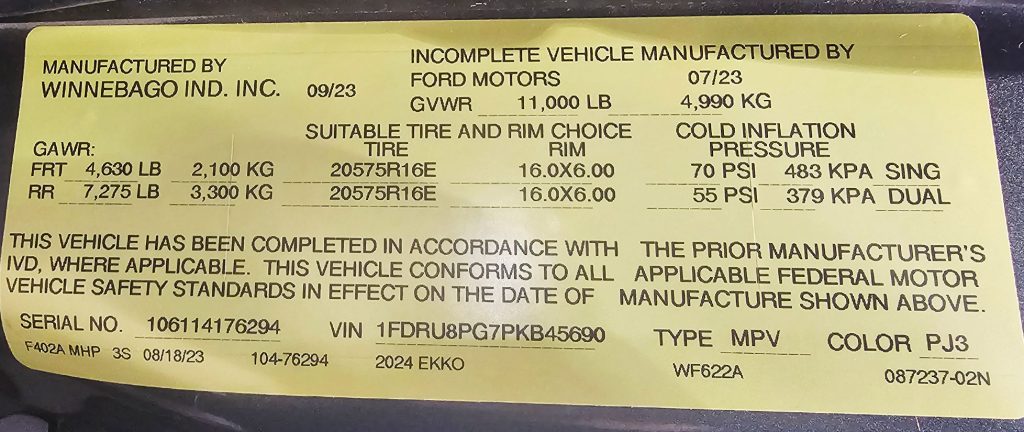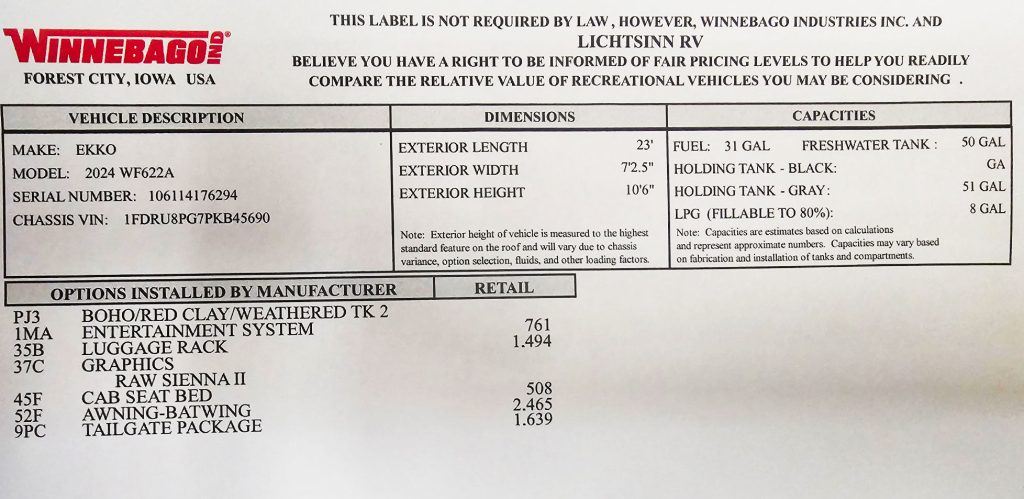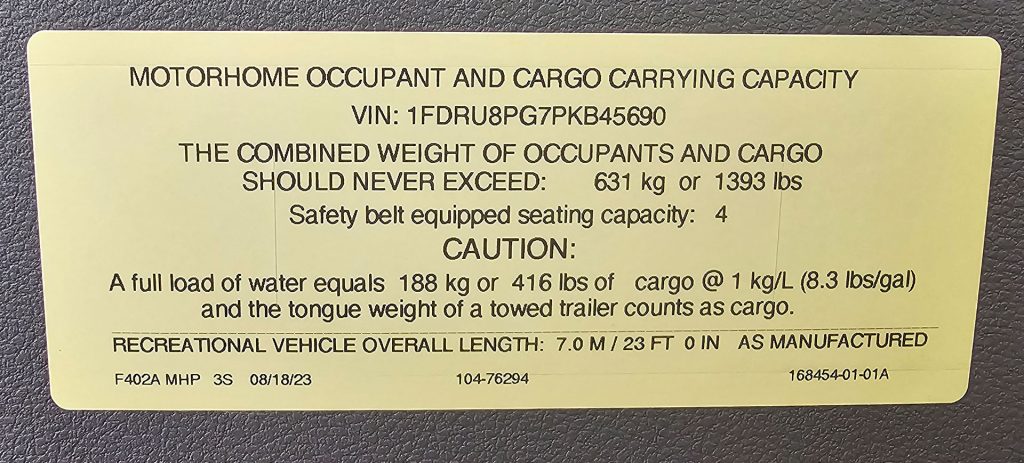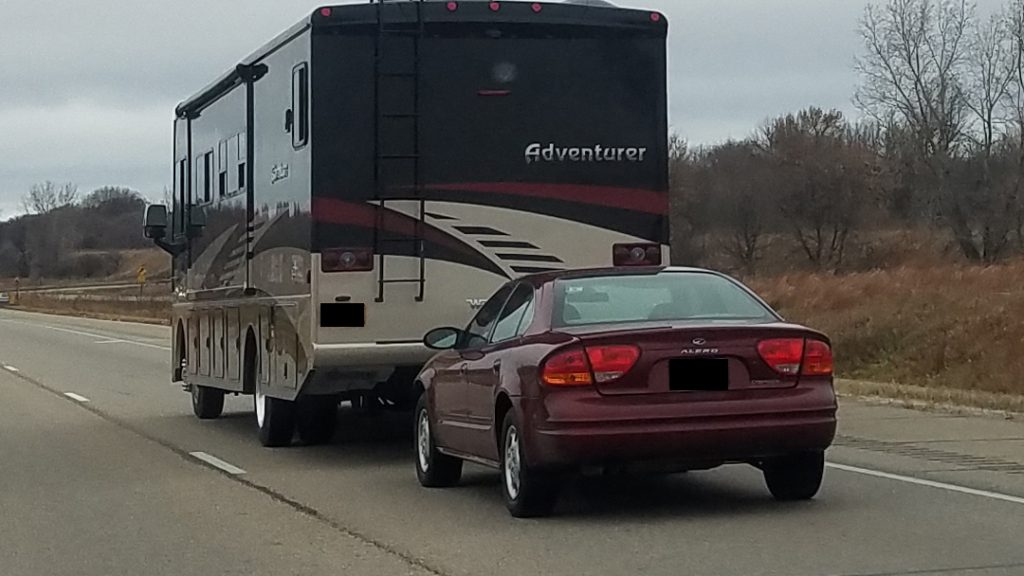You know your trailer hitch weight rating so now you know how much you can tow right? Unfortunately your hitch weight capacity doesn’t tell the whole story. However, after a little research to find a few important numbers, you will be able to figure out how much your motor home can tow! The first step in the process is identifying what chassis your motorhome is built on so that you can find the specifications of that specific chassis. Continue reading to learn the three most important values in determining how much your motorhome can tow.
1. Maximum Towing Capacity
This number can be found under specifications for your chassis or by figuring the difference between the Gross Combined Weight Rating (GCWR) and the Gross Vehicle Weight Rating (GVWR).
2. Gross Vehicle Weight Rating (GVWR)
This number represents the maximum weight that the vehicle itself is allowed to weigh. The towed vehicle doesn’t count toward this number but the tongue weight of the trailer does count here. You can find the GVWR number on the tire pressure plate inside the driver’s door.
(Example below GVWR = 11,000 lbs)

3. Maximum Available Gross Combined Weight Rating (GCWR)
The GCWR will be listed under ‘specifications’ for your chassis. This number includes maximum pounds of everything combined – the motorhome, the people in it, the towed vehicle, the contents in your tanks (every tank), the jumper cables, camping supplies, etc. The total poundage of everything combined must be less than the specified GCWR!
(Example below of window sticker lists tank capacities)

Below you will find additional detail on determining your Motorhomes towing capacity.

Now look at your RV hitch where you will find the hitch weight rating plate. When a manufacturer tells you that the vehicle can tow 5000 pounds, this ‘hitch rating’ is typically where that comes from. If the ‘hitch rating’ is lower than the chassis’ Maximum Towing Capacity then your new towing capacity number will be that of the ‘hitch rating.’
Locate the Occupant and Cargo Carrying Capacity (OCCC) sticker, available on motorized RVs only. This weight sticker is put on by the RV manufacturer (Winnebago normally places it on the inside of the driver’s door). The OCCC figure is the maximum allowable weight of all occupants, plus weight of all food, tools, full tanks, full LP-gas tanks and personal belongings.
(Example below OCCC = 1,393 lbs)

Calculations:
Subtract the OCCC from the GVWR to get the weight of the empty RV.
GVWR – OCCC = Empty RV
Now figure the weight of your loaded RV, add the towed vehicle weight and see if you’re overweight. Your total pounds cannot exceed the GCWR!
+ Weight of empty RV
+ Weight of vehicle being towed (To determine if your vehicle is towable and to find the vehicle weight see your vehicle owner’s manual for towing specifics)
+ Weight of driver
+ Weight of passenger
+ Full load of water (Water weight is listed on the OCCC sticker. If you should add this up yourself, be sure to include the water in the water heater).
After adding all of this together, if the total pounds exceed the GCWR, you’re RV is overweight! And remember you still haven’t added in the weight of a full tank of propane, any food, additional cargo, extra passengers or pets and a contingency in case you have to travel with full black and/or grey tanks. If you decide you don’t want to do the math you can simply load your RV up, just as you would for a trip, and drive down to a local truck scale.
Experience the Best® at Lichtsinn RV, we have been recognized as the #1 Winnebago Dealer in North America each year since 2015 by Winnebago Industries. Lichtsinn RV is located 1 mile north of the Winnebago Motorhome Factory in Forest City, IA and we proudly sell new Winnebago motorhomes and pre-owned RVs from various manufacturers. While at Lichtsinn RV, you can expect no delivery miles on new RVs, a complimentary half-day educational orientation of your RV, excellent guest reviews, an assigned support team from sales, parts, service and the business office, superior accommodations, no-hassle pricing and competitive financing. See our extensive new and used inventory here.
Additional Posts You May Like:
Class A Motorhomes: Diesel Pusher vs. Gas Motorhome

